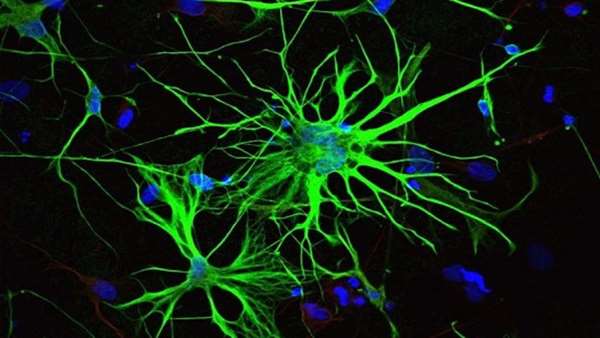New cell model could lead to treatments for neurological diseases
Astrocytes are star shaped cells that are found in the brain and spine and were long thought to be the “glue” that binds nerve cells. However, recent advances show that they are in fact responsible for complex regulation of a variety of critical brain functions. They have also proven to be central to neurological diseases such as Alzheimer’s. But for research, these cells prove problematic.
Astrocytes are star shaped cells that are found in the brain and spine and were long thought to be the “glue” that binds nerve cells. However, recent advances show that they are in fact responsible for complex regulation of a variety of critical brain functions. They have also proven to be central to neurological diseases such as Alzheimer’s. But for research, these cells prove problematic.
“Human astrocytes are significantly more complex than those found in mice, for example, mice do not develop the same brain diseases as humans. We therefore need better ways to study this cell type”, says Anna Falk, associate professor at Karolinska Institutet’s Department of Neuroscience.
Together with Anna Herland at KTH and researchers at AstraZeneca, Anna Falk developed a new cell model for human astrocytes. Drawing on Nobel Prize-winning technology, the researchers reprogrammed human skin cells to create induced pluripotent stem cells, or iPS cells, which were then guided with growth factors to become astrocytes.
Beginning with stem cells, researchers can produce an infinite number of astrocytes, which is important for the large-scale use within the pharmaceutical industry.
“The historically high statistics of clinical failures in developing drugs against neurological diseases have now made drug companies increasingly interested in improved cell models in which human cells are used,” says Anna Herland, assistant senior lecturer at the Department of Micro and Nanosystems at KTH. “Our work has been focused on development of a cell model that follows human embryonic development of astrocytes.”
Compared with cell models used in the pharmaceutical industry today, Falk and Herland’s model shows wider functionality. A pilot drug screening with a few substances showed that the model has the potential to identify new candidates which can go into drug development for neurological diseases.
"Our model of human astrocytes is an important step forward in order to understand and attack human neurological diseases where astrocytes have an important role,” says Anna Herland. “With this model, we can begin to study how astrocytes develop and receive their functional diversity during embryonic development”.
The research was supported by the Swedish Research Council, the Swedish Foundation for Strategic Research, Vinnova, the European Commission, the Wallenberg Foundations, and the Swedish Knowledge Foundation.
Reference: http://www.cell.com/stem-cell-reports/fulltext/S2213-6711(18)30047-X





ارسال به دوستان